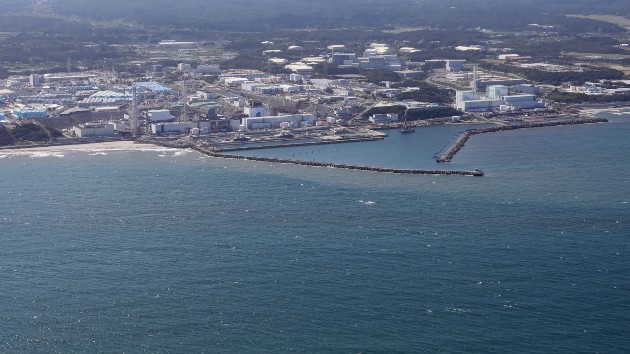(NEW YORK) — Japan’s Tokyo Electric Power Company began releasing treated radioactive water from the wrecked Fukushima nuclear power plant into the Pacific Ocean on Thursday afternoon.
Executives of the company, known as TEPCO, told reporters they would immediately halt the release of the treated water into the Pacific if any issues were detected. The water began flowing at about 1 p.m. local time with an initial plan to release water “continuously” over a period of 17 days, according to the company.
The controversial decision, which had drawn protests in Japan, South Korea and elsewhere, prompted Chinese officials to issue a searing statement on Thursday, saying Beijing “opposes and strongly condemns it.” Japan’s actions were “selfish and irresponsible” as the ocean “belongs to all humanity,” China said.
“There could be a man-made secondary disaster to the local people and the whole world if Japan chooses to dump the water into the ocean just to serve Japan’s selfish interests,” Wang Wenbin, spokesperson for China’s Foreign Ministry, said in the statement.
In the bustling business district of downtown Tokyo, activity swirled near TEPCO’s headquarters on Thursday. Although demonstrators weren’t permitted to approach the TEPCO building itself, hundreds assembled across the street, their determined presence contrasting sharply with the serenity of the nearby Imperial Palace, just a kilometer away.
Despite the blue skies, the mood was one of desperation. The crowd chanted various demands, among them a call to “protect our rights.”
The gathering was organized and peaceful. Demonstrators thoughtfully positioned themselves along the sidewalks, ensuring pedestrians could pass. Journalists, stationed at their designated spots, captured the event, while a sparse police force looked on.
Among the concerned faces, Terumi Kataoka stood out. A woman in her 60s from Fukushima, she held a blue banner decorated with fish, sending a clear message: “No Dumping Radioactive Water into The Ocean.”
She voiced her concern with conviction, saying, “Who says tritium is not so bad, government scientists? Can you believe that? Well, it is not safe at all. That is why we are protesting and trying to stop the dumping of radioactive water into the ocean.”
Beside her, Sachiko Ogawa’s impassioned voice rang out, amplified by a bullhorn, “The law says TEPCO must deal with the waste they create! They’re really messing up the sea. We can’t let this happen. We can’t let up!”
Officials from the International Atomic Energy Agency were at the Fukushima Daiichi Nuclear Power Station as the water began flowing into the ocean, the agency said. Agency officials had signaled their approval for Japan’s plan.
“IAEA experts are there on the ground to serve as the eyes of the international community and ensure that the discharge is being carried out as planned consistent with IAEA safety standards,” Director General Rafael Mariano Grossi said in a statement on Thursday.
Agency staffers had earlier in week taken samples from the first batch of water to be released. The agency’s “independent on-site analysis” of that water confirmed that levels of tritium in the water were “far below the operational limit.”
Prime Minister Fumio Kishida and international experts have asserted the treated water meets safety standards.
TEPCO will “under the continued guidance of the Japanese Government, handle this matter with the firm awareness that we are responsible for ‘preventing reputational damage’ and ‘not betraying the trust of the people of Fukushima and the Japanese people’ throughout the course of the discharge period,” the company said in a statement on Wednesday.
A solitary man took a spot right in front of the TEPCO building across the street away from the demonstration o Thursday. For some reason, police didn’t remove him. He stood there silently throughout the hourlong protest.
Another protester in the crowd, a young Tokyoite named Taishi, held up a simple sign that read, “Stop It.”
He told ABC News in straightforward English, “They can stop this.”
The protest ended promptly and peacefully at about 11 a.m. The crowd went their different ways.
Shortly afterward and 250 kilometers away, TEPCO began releasing the treated water from the crippled nuclear plant into the Pacific Ocean, marking the start of a divisive process expected to go on for decades.
Copyright © 2023, ABC Audio. All rights reserved.












